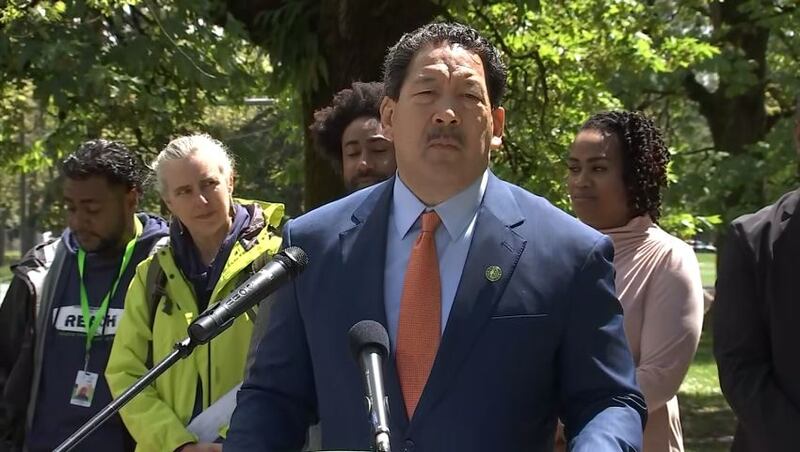In a Thursday press conference, Seattle mayor Bruce Harrell and other community leaders touted recent outreach efforts made toward people living in homeless encampments in Woodland Park.
“We had 89 referrals, the most referrals from any encampment removal in our city’s history,” Harrell said. “This is what we want to highlight today, which is a critical step toward progress and permanent housing, and treatment.”
Of the 89 referrals, 60 were referred to tiny house villages, 25 were referred to “enhanced shelters,” and four were relocated to “permanent housing alternatives,” the mayor said.
Within the group of 60 relocated to tiny homes, 30 were directed to villages run by LIHI, the Low Income Housing Institute.
LIHI confirms, all 30 sent to their tiny home villages are still living there. Those now in LIHI’s care, were scattered amongst a number of villages.
Here’s where they went:
- Five to Rainier Beach
- Four to Lake Union
- Four to Georgetown
- Four to Interbay
- Four to Whittier Heights
- Three to Camp Second Chance, White Center
- Four to Friendship Heights, Aurora Avenue
- Two to True Hope Village, Yesler Way
“Woodland Park is a gem of our city,” Harrell said.
“It’s one thing just to hopefully house people that have been [sheltering here], it’s another thing now to make sure your investment strategy and your employees are keeping up the gem,” Harrell said. “You don’t waste an asset, you invest in an asset, you maintain an asset. So that’s the other component of what we’re trying to do.”
“This can’t be a victory lap because not everyone is housed,” said Marc Dones, CEO of the King County Regional Housing Authority. “In homelessness, there is no such thing as a good press conference until everybody is housed, and today is not that day. However, what we have done in partnership is different and it is important that we recognize that difference.”
Scroll down to continue reading
More news from KIRO 7
- Man arrested in connection with murder of 24-year-old Tacoma mother
- Watch out, gardeners: Invasive jumping worms reported in 34 states
- Nearly 6,000 without power around Puget Sound
- Do you have an investigative story tip? Send us an email at investigate@kiro7.com
According to Dones, the number of people exiting shelter and housing as a result of outreach work is the highest they’ve ever achieved.
“The reason for that is that we took the time to get to know people,” Dones said. “We talk about systems and we talk about the improvement of systems, but at the core, this work has always been and will remain people helping people.”
“I’m confident that this phased approach model that we used at Woodland Park and Ballard Commons Park, which gives professional outreach workers the time needed to build relationships and connect people to the services that they need, is why so many people accepted shelter referrals,” said Seattle city councilmember Dan Strauss.
Strauss also mentioned the city’s need to scale up shelter capacity while permanent housing is built. Last year was Seattle’s first time meeting its target of funding $200 million in affordable housing.
“We know that people’s most desired place to come inside to is a personal space — a place that has four walls and a door that they can lock,” Strauss said. “And candidly, our city does not have the shelter capacity we need and we are doing more now than ever before.”
Hailey Hunt manages the Rainier Beach tiny home village, where five campers were relocated to. Hunt says, initially there was not enough space at her site.
“When there’s a sweep or when there’s a lot of pressure on shelters to get spots ready, we’re also trying to move people into permanent housing,” said Hunt.
©2022 Cox Media Group








